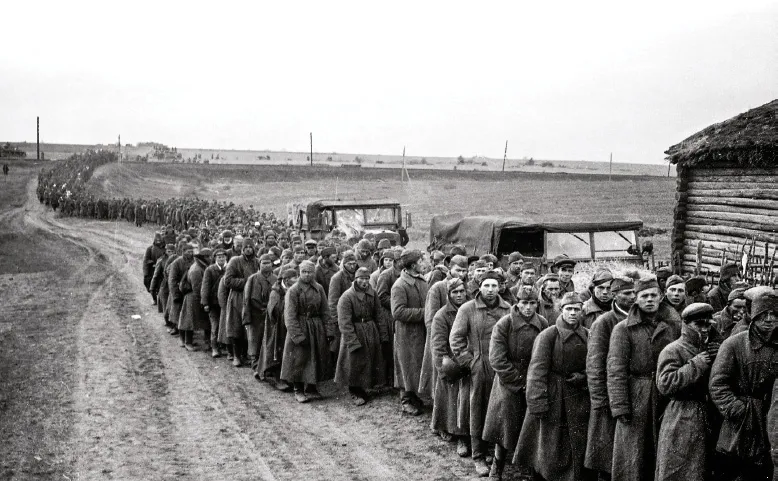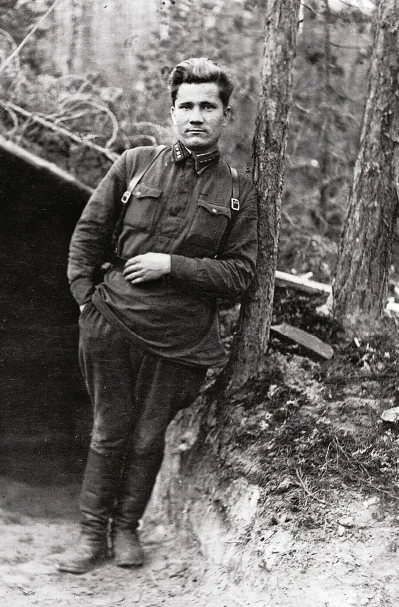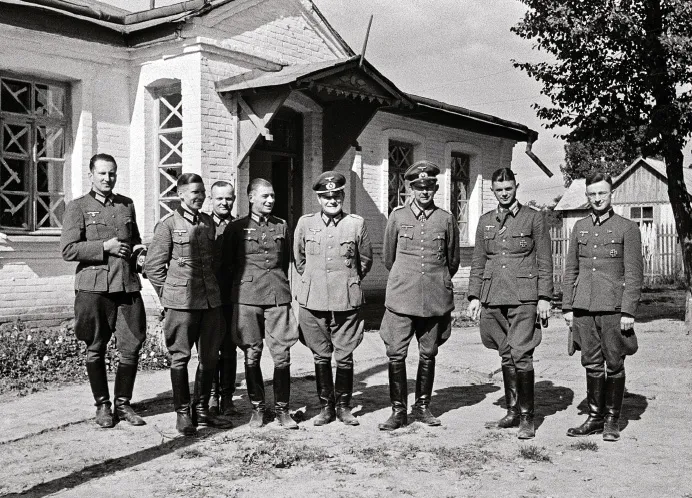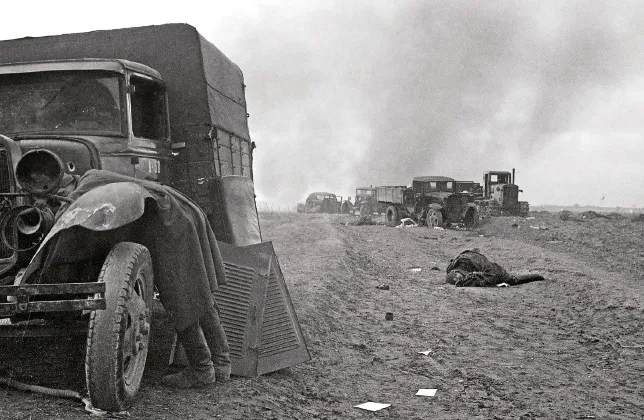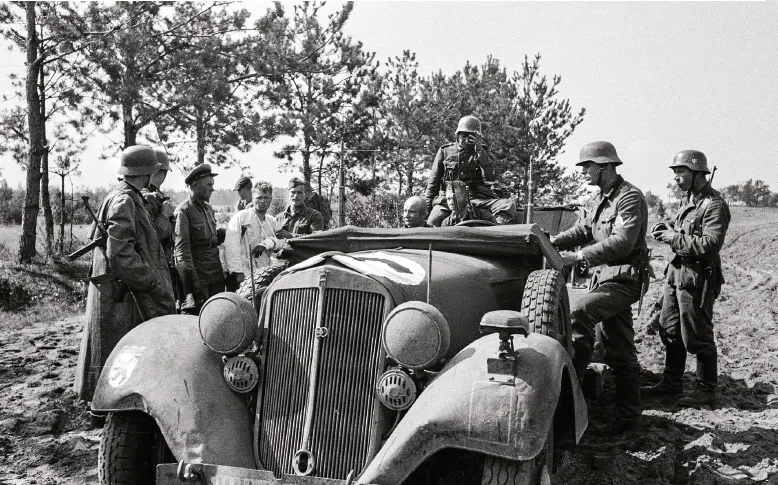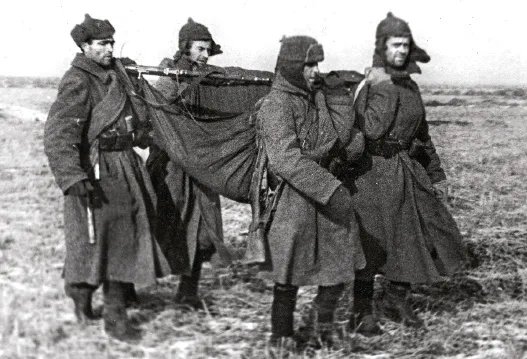![]()
Defending Moscow
Zhukov’s arrival as commander of Moscow’s defense did not immediately change the course of events. In fact the situation had never been more serious. The magnitude of the disaster between Bryansk and Vyazma was becoming apparent. But would Army Group Center be able to make the most of its advantage?
Zhukov’s inspection showed him the fragility of the Soviet facilities in place in front of Moscow. He arrived in Mozhaysk in the evening of the 7th, where Konev, only just escaped from the Vyazma pocket, exposed the sad facts: a breach 500km wide with the panzers 200km away from Moscow, and less than 100km away from Mozhaysk. The 50th Division and the 18th Tank Brigade, freshly arrived that morning from near Moscow, were defending Gzhatsk (now Gagarin), the last important town before Mozhaysk. The Western Front commander was worried, as much by the strategic situation as by Stalin’s mood; he feared that the latter wanted him executed, which Zhukov confirmed. Zhukov then had to find Budyonny. No one knew exactly where his headquarters were. Maloyaroslavets was mentioned, a small town southeast of Mozhaysk. Zhukov left in the middle of the night, in the snow on bad roads and in fear of meeting the German vanguard at any time. He managed to find Budyonny’s staff, but they didn’t know where Budyonny was. Zhukov made the most of the situation by ensuring that his mother and sister, who lived nearby, were evacuated, before moving on to Maloyaroslavets. Spotting two cars parked next to the local Party office, he found Budyonny inside with a small group of officers poring over a map, trying to guess where his Reserve Front staff might be. After a brief exchange, Zhukov promptly went back to Moscow. His report to the Stavka and Stalin was blunt:
One of the interminable columns of prisoners photographed so abundantly by the propaganda companies during the fall of 1941. Over 1.2 million Russian prisoners were taken in the Kiev, Vyazma and Bryansk pockets. (Jacobsen/ECPAD/Defense)
A frontovik poses in front of his shelter. This anonymous soldier reminds us of the thousands of men who were lost in the Vyazma-Bryansk pockets, either killed on the battlefield or dead in captivity.
(G. Gorokhoff Collection)
A group portrait of the staff of XLVIII Panzer Corps, 2nd Panzer Group. General Werner Kempf is third from the right. His army corps, which remained as reserve during the first phases of Typhoon, suffered from logistics issues and was slowed by the rasputitsa (muddy season) when the time came to move up the line. (Albert Otto/ ECPAD/Defense)
A 15cm sIG33 auf Panzer I (Sf), of the 702nd Heavy Infanteriegeschütz Company (motorized), is able to travel Russian tracks quite well. The company was attached to the 1st Panzer Division. Originally intended to destroy fortified positions, it would also destroy tanks during Barbarossa.
The main danger comes from the fact that all the roads towards Moscow are open, and the weak protection brought by the Mozhaysk Line is no guarantee against the arrival of the enemy’s armored forces at Moscow’s gates. We must immediately assemble forces, from wherever possible, on the Mozhaysk Line.
This candid assessment pleased the Vozhd. Budyonny was relieved of his command. Zhukov was given responsibility of the Western Front, which was promptly combined with the Reserve Front with Konev as deputy, but Stalin made it clear that both their lives depended on their success over the Germans.
The Enemy at the Gates of Moscow
Supported by the Stavka, Zhukov started straight away. A new Reserve Front was put in place before in its turn being placed under Zhukov’s command, who by the 12th, oversaw the whole defense of the capital. He confirmed the dispatch of all the Red Army units available, the militia and the military schools in order to rebuild a front on the incomplete Mozhaysk Line. On the ground, resources already available had been deployed, either by order of Zhukov’s staff, or by individuals showing initiative, as with Major G. Starchak, commander of the paratrooper school at Yukhnov. He assembled 400 men, including members of the NKVD, and blocked the attempt by the reconnaissance group of the 10th Panzer Division to take the Ugra bridge. The arrival of a heavily armed motorized battalion forced the Russians to fall back. Russian sources claimed that Starchak’s men managed to destroy the bridge. The Stavka had already sent 3,500 cadets, from the infantry and artillery schools in Podolsk, east with orders to last at least four to five days. The situation implied resistance at all costs. Zhukov imposed a draconian discipline, including hunting down anyone too slow, deserters and other “trouble-makers,” civilian or military, though this was not really anything new.
The 5cm Pak 38—maneuverable, compact and with a good firing rate-was an adequate antitank piece, but found its limitations when it came into service in the summer of 1941, and had to face KVs and T-34s. The one in the photograph is said to have destroyed seven Soviet tanks. (Jacobsen/ECPAD/Defense)
A destroyed Soviet motorized column. The trucks seem to be GAZ-AA, nicknamed “Russki-Ford” by the Germans. (Heinrich Freytag/ECPAD/Defense)
Even though he had found the ideal general to defend Moscow, Stalin, though hoping for the best, prepared for the worst. On the 9th, he ordered the closure of over a thousand businesses. The day after, all inhabitants who were not employed in the armament industry were requisitioned as laborers to build fortifications. This measure was not unusual since the summer and the Muscovites got on with it more or less willingly. However, they quickly realized the seriousness of the situation. Firstly, no fewer than 250,000 civilians, especially women, were mobilized to build a new line close to the city, to be finished within four weeks. But the danger was getting closer, first in the air. Olga Sapozhnika remembered: “We were taken several kilometers away from Moscow, we were a large number and we were asked to dig trenches. On the first day, we were shot at by a Fritz who dove on us. Eleven girls were killed and four wounded.”
These men from the 293rd Infantry Division are interrogating prisoners—possibly deserters. Summary executions abounded as early as the beginning of Barbarossa, in keeping with Nazi indoctrination and orders. The car is a SdKfz 2 Type 170 VK. (Otto Paul/ECPAD/Defense)
It is difficult to find shots of Soviet soldiers, especially at the beginning of Typhoon. This photograph clearly demonstrates the difficulties of transporting the wounded— who were often left behind. Several generals were wounded during Typhoon, among them Eremenko, commander of the Bryansk Front. (Ph. Rio Collection)
Other preparatory measures added to the concern felt by the population and the foreign chancelleries, resulting in what became known as “the Moscow Panic.” Scenes of pillaging and panic took place everywhere as thousands of civilians were evacuated, but the authorities remained in control. On the 14th, Stalin ordered the departure of the main theaters, then the university, then foreign representatives. Coming out of a conference on the military situation on the 11th, the British ambassador wrote: “it was a hopeless report … Moscow’s position is extremely precarious.” The US military attaché’s assessment was even more final: “the end of the Russian opposition is near.”
The End of the Vyazma Pocket
The battles of the pockets started as soon as they were closed up, the Red Army troops trapped between the infantry and the panzers. The largest part of Army Group Center was concentrated to the east of Vyazma, encompassing most of the 16th, 19th, 20th and 32nd armies—the latter from the Reserve Front–which totaled at least 500,000 men—in a pocket initially 75km by 35km. The 24th Army of the Reserve Front had already shattered into several smaller pockets in the south. Its commander, General Rakutin, was killed on October 10, whilst trying to break through the encirclement.
The woodland terrain concealed movements but complicated the coordination between the troops who quickly ran out of ammunition, and more importantly food and medical supplies. The VVS provided a few airdrops, but it was not enough, especially as the pocket was reduced drastically in a few days under pressure from the infantry. As soon as they were spotted a deluge of ...

